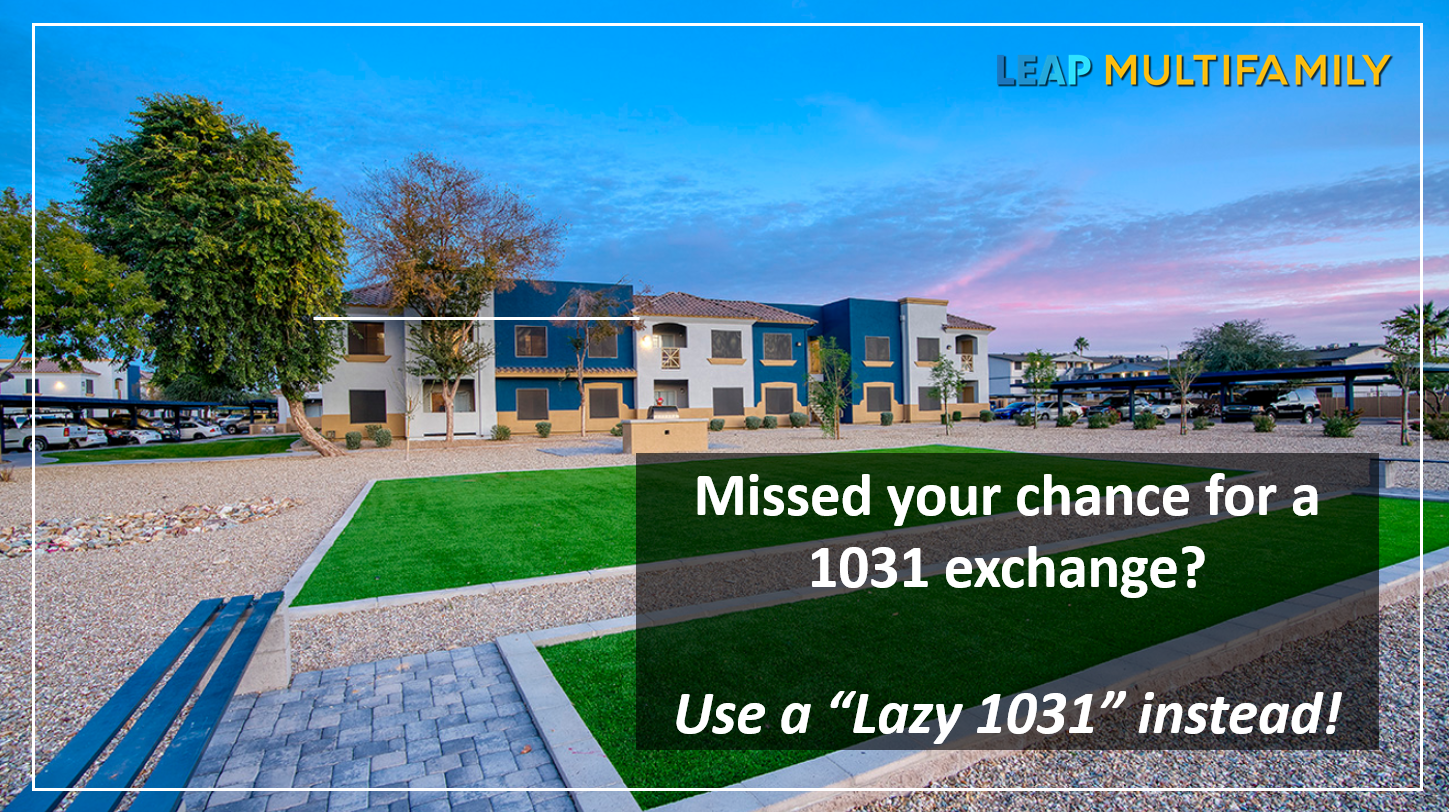Last year, I had a large gain on the sale of some property, and I didn’t want to attempt a 1031 exchange. However, I didn’t pay capital gains tax or depreciation recapture on those proceeds. How is that?
Although 1031 exchanges are an amazing way to defer taxable gains into the future, sometimes you don’t want to deal with the paperwork, or you just can’t find another deal to invest into. In those cases, you can accomplish almost the same thing through a “Lazy 1031”.
What the heck is a “Lazy 1031”?
The 1031 Exchange is an option that allows active real estate investors to sell a property and defer the taxes
from capital gains and depreciation recapture as long as they buy a “like-kind” property within a certain timeframe that is of equal or greater value. We bring 1031 money into each of our syndications but it’s a more complicated process that includes the need for a “qualified intermediary”, selling the old property, and identifying and buying the replacement property within the IRS timelines. 1031’s are a lot of work but the result is that the capital gains and depreciation recapture are effectively transferred to the new property.
The purchase of commercial real estate comes with significant depreciation, especially over the first few years of ownership. In addition to straight line depreciation, investors also enjoy bonus depreciation (this phases out over the next 5 years starting in 2023) and cost segregation. The end result is that you may see 50-75% of every invested dollar come back in 1st year depreciable “loss”. Even if the property cash flows on Day 1, the K-1 you receive at the end of each year will show a large “loss” that you can use to offset other passive income.
You may have sold other properties and received large capital gains or you may have significant cash flows from operations. Both capital gains and regular cash flows can be offset by the depreciation from your new syndicated investment. Keep in mind, when you take depreciation in year one, you will eventually have to “recapture” the depreciation when you sell. Because of this, the strategy works best when you reinvest in new deals and start the cycle all over again.
Example
Let’s say you bought a property for $250,000 all cash and sold it several years later for $500,000. That would generate a $250,000 capital gain. As of now, you would have to pay taxes on the $250,000 gain. Assuming a 20% capital gains tax rate, you would pay $50,000 in taxes and be left with only $450,000. However, if you took the $500,000 and invested it into a multifamily syndication, you would have a large paper loss in year 1 and owe no taxes on the capital gain or the depreciation recapture.
For this example, we will assume the 1st year depreciation is 50% of the invested amount. You would have a $250,000 paper loss that would completely offset the $50,000 in taxes that you owe from the property you sold (we’re excluding the depreciation recapture here for simplicity’s sake). You would also have $200,000 of passive losses left over that would carry over into subsequent years until it is used up. This can be used to offset cash flows of this property and even the capital gains of other property sales in future years!
The Real Estate Treadmill
The beauty of this approach is that it keeps on working as long as you keep investing – similar to the regular 1031 Exchange. As long as you keep investing new money and/or investing the gains from deals that go full cycle, you are likely to have enough depreciation each year to offset your taxable gains.
Real estate carries some powerful and unique tax benefits. Few are as simple as the “Lazy 1031”. If you don’t want to meet the demands of a 1031, or you can’t find a new deal to get your money into, the “Lazy 1031” might work very well for you. As always, talk to your accountant and other advisors about your specific financial situation to make sure that this strategy suits you.

